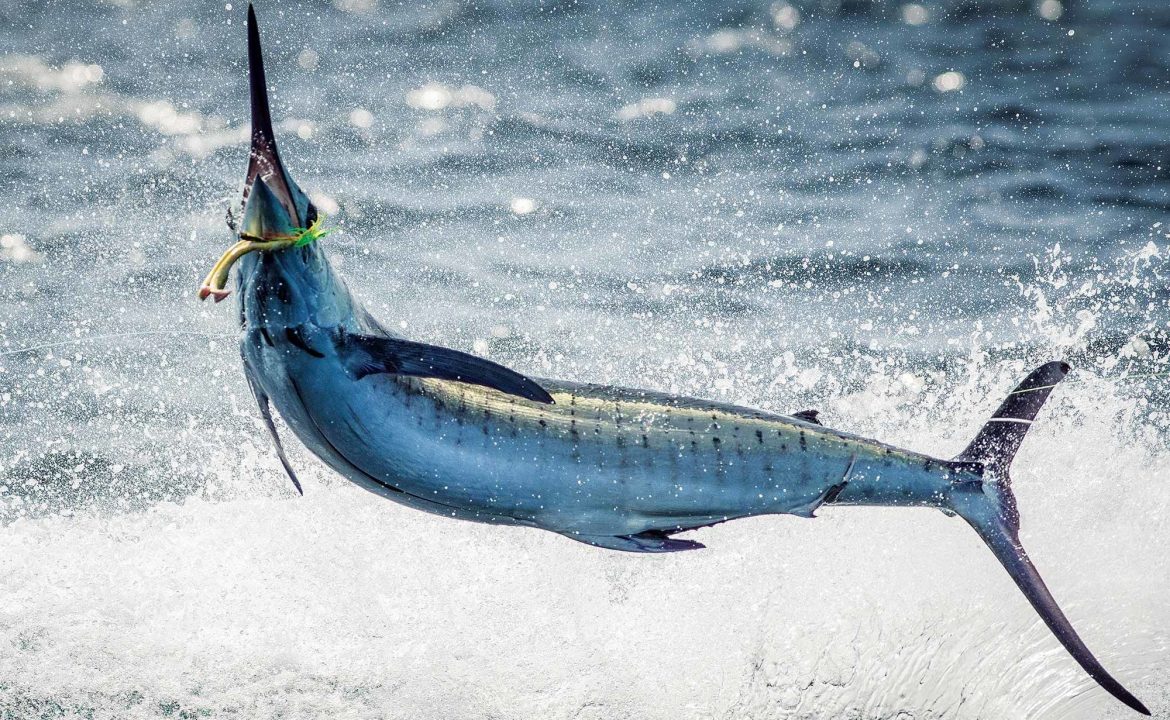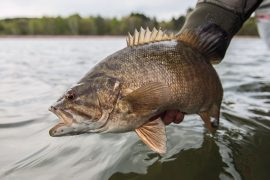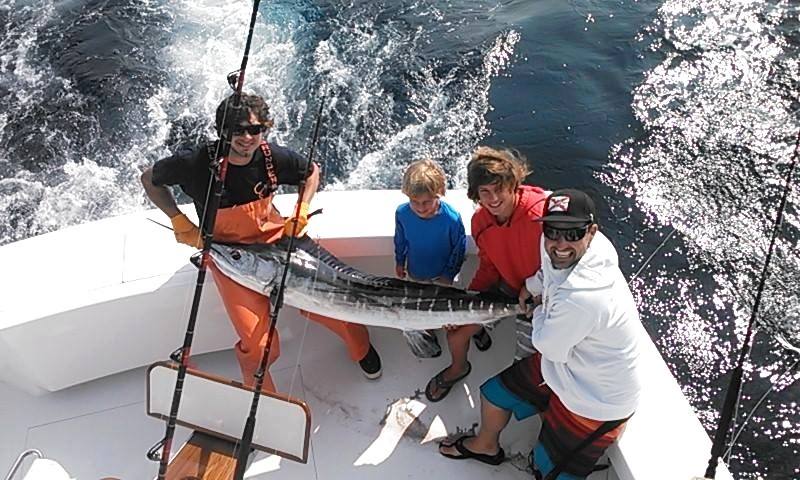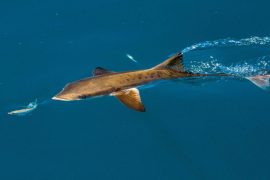
Most of us are somewhere between infatuated and obsessed with blue marlin, but unless you’re a billfish scientist, you probably don’t understand how these lightning-fast finely honed eating machines are able to swim thousands of miles, populate the vast tropical and subtropical oceans of the entire world, and detect and chase down the fastest, most elusive prey species — and to have done it successfully for literally millions of years. The short answer is incredibly engineered anatomy and physiology.
Play Video
Play
Loaded: 0%
Progress: 0%
Remaining Time -0:00
This is a modal window.
Foreground — White Black Red Green Blue Yellow Magenta Cyan — Opaque Semi-Opaque
Background — White Black Red Green Blue Yellow Magenta Cyan — Opaque Semi-Transparent Transparent
Window — White Black Red Green Blue Yellow Magenta Cyan — Opaque Semi-Transparent Transparent
Font Size 50% 75% 100% 125% 150% 175% 200% 300% 400%
Text Edge Style None Raised Depressed Uniform Dropshadow
Font Family Default Monospace Serif Proportional Serif Monospace Sans-Serif Proportional Sans-Serif Casual Script Small Caps
Defaults Done
While all top-level fish hunters realize that detailed knowledge about one’s quarry is the key to finding it, getting the bites and converting them into captures, most lack exposure to many of the cutting-edge scientific advances that can give them an edge. I recently reviewed these during the course of writing a chapter about blue marlin biology and ecology for Capt. Steve Campbell’s outstanding book, Blue Marlin Magic. I was fortunate to interview and work with a number of the top scientists in the field, and the information they graciously shared blew me away.

The Billfish Evolutionary Tree
Professor John Graves, of Virginia Institute of Marine Science, shared with me results of DNA and morphological analyses he conducted with colleagues. Some of the billfish evolutionary tree we would all have guessed correctly — such as white and striped marlin being closely related, as are the four species of spearfishes. All billfish — marlin, spearfishes and sailfish — belong to the family Istiophoridae, with broadbill swordfish the sole species of the offshoot family Xiphiidae. Now, which billfish species would you guess is the closest genetic relative of blue marlin? I’d have guessed black marlin, but the correct answer is actually sailfish.
My next surprise came in reviewing just how long blues have been around. The branch of the billfish evolutionary tree we know as a blue marlin was sufficiently perfect that they are the most common billfish identified in fossil records dating to the late Miocene epoch. This means they were dominating their environment, worldwide, more than 12 million years ago. Sea levels were much higher than they are today. These fossils have been found scattered in locations as varied as Italy, Virginia, North Carolina, California and Mexico. To put this in perspective, we hadn’t even evolved yet — the closest things to humans roaming the earth were some humanoid apes. So the next time you feel humbled by a lit-up blue crashing your spread, you have every reason to be: They’ve been around for a very long time.

Satellite Tagging and Open-Ocean Behavior
Research scientist Michael Musyl provided a fascinating look at the incredible capabilities we are learning about blue marlin through pop-up satellite archival tags. Everything these creatures do is finely tuned, and the more we understand, the better we can adapt our techniques to encounter them more often. The continuous data produced by tagged individuals tells us their position, depth and ambient water temperature over considerable periods of time. Interestingly, some of this data only serves to confirm what far-flung artisanal fishermen independently figured out a long time ago. By the time Ernest Hemingway wrote The Old Man and the Sea, he was aware that the old Cuban hand-liners would set their baits deep — 300 to 800 feet — and catch blue marlin as well as big yellowfin and bigeye tuna. Meanwhile, Polynesian hand-liners were doing exactly the same thing, using rounded volcanic stones and a special slipknot to sink flying fish and other baits, in which a sharp tug on the line releases the weight. Modern-day swordfish and tuna longliners catch large numbers of blues by fishing dead natural baits much deeper than sport anglers. PSAT results tell us why, and suggest options for thinking outside the box.

[A] Eyes: Proportionate to their body size, blue marlin have the largest eyes of any billfish species, comparable to the eyes of a swordfish. Blue marlin also have the ability to heat their eyes using special cells, further increasing their visual acuity even in low-light conditions. [B] Bill: Thought to decrease hydrodynamic drag as well as provide improved feeding capability by stunning its prey, a marlin’s bill is covered with millions of rough denticles. [C] Inner Ear: A blue marlin’s tiny ear bones, or otoliths, can detect sound from long ranges and in a variety of wavelengths. Marlin have exceptional hearing. [D] Lateral Line: The fish’s lateral line uses sensory hair cells to trigger nerve responses and function as hydrodynamic receptors of low-frequency wavelengths emitted within two body lengths of the marlin. This allows them to sense prey and predators at close ranges, even in near-total darkness. [E] Gills: Blue marlin use ram-jet ventilation, pushing seawater past millions of tiny leaflike structures stacked along each gill filament to maximize oxygen extraction. The efficiency of this arrangement is unequalled in the animal kingdom. [F] Jaw: A predentary bone joins the tips of the two lower jawbones, allowing the jaws to open much wider than usually possible without coming apart. This allows blue marlin to consume very large prey, weighing as much as 10 percent of the marlin’s own body weight. [G] Dorsal, Pectoral and Pelvic Fins: With grooves and depressions along the fish’s body, a blue marlin can completely retract these fins for a more streamlined shape as needed. When extended, they give the fish incredible maneuverability. [H] Brain: A huge optic center processes information from the eyes, giving blue marlin excellent vision. They essentially see in black and white as they look down, but in shades of color as they look up toward the ocean’s surface. [I] Tail: A blue marlin’s extended tail lobes can reach water that is undisturbed by the passage of the fish’s body, making them extremely efficient swimmers.
We now know that blue marlin spend much of their time easing along at 1 to 3 knots in warm, turbulence-mixed water above the thermocline, within a temperature range of 72 to 88 degrees, preferring a range between 75 and 81 degrees. However, during the daytime, they exhibit what Musyl calls a “W-pattern,” frequently diving to depths between 500 and 650 feet, and sometimes as deep as 2,600 feet. Stomach-content analyses show these fish are feeding on squid and deepwater fishes (“stuffing themselves” might be a better description), then surfacing to repay oxygen debts and warm up their muscles. Are island hand-liners and industrial longliners catching blues that are on their way down or perhaps swimming back up from these dives? Are there times and…





